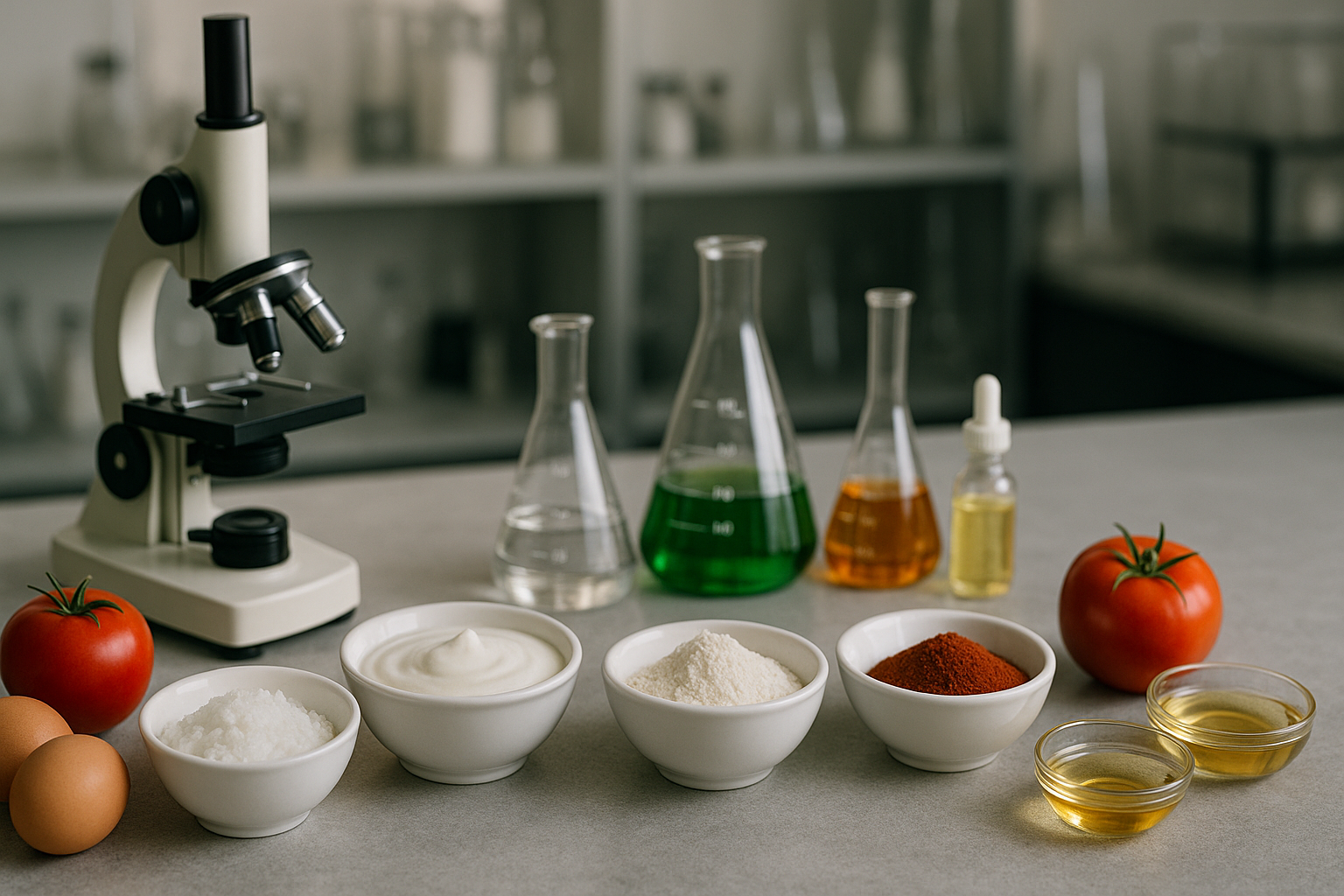Trending searches
Trending searches

Hydrocolloid: Cellulose Gum
SUBSCRIBE TO OUR BLOG
Promotions, new products, and recipes.
Cellulose Gum: The Plant Fiber Powerhouse in Modern Gastronomy
Cellulose Gum, also known as carboxymethyl cellulose (CMC), is a cellulose derivative that has garnered attention in various industries due to its exceptional thickening, stabilizing, and emulsifying properties. But what's the scientific foundation behind this hydrocolloid's behavior, and how has it become an indispensable ingredient in the culinary world?
Historical Overview
Cellulose, the primary component of plant cell walls, has been known for centuries. The transformation of this natural polymer into its carboxymethyl derivative, CMC, began in the early 20th century, marking its debut in commercial applications1.
The Molecular Science of Cellulose Gum
Cellulose Gum is synthesized by the etherification of cellulose, where the hydroxyl groups of cellulose are substituted with carboxymethyl groups2. This modification imparts solubility in water and introduces the thickening properties characteristic of CMC.
Extraction and Synthesis
Starting with cellulose extracted from wood pulp or cotton lint, the synthesis of CMC involves a series of chemical reactions, primarily the treatment with alkali and monochloroacetic acid3.
A Multifaceted Ingredient
Cellulose Gum's unique properties make it a sought-after ingredient in various sectors:
-
Food Industry: Used as a stabilizer, thickener, and emulsifier in numerous food products4.
-
Pharmaceuticals: Incorporated in tablet formulations and as a viscosity enhancer in syrups5.
-
Cosmetics: Valued in products for its texture-modifying properties6.
Cellulose Gum in Culinary Creations - Proportions
Cellulose Gum's culinary proportions are dictated by its potent thickening capabilities:
-
Baked Goods (e.g., Breads, Cakes):
- Proportion: 0.1% to 0.5% of the total weight7.
- Purpose: Enhances texture, moisture retention, and shelf life.
-
Dairy Products (like Ice Cream, Yogurt):
- Proportion: 0.2% to 0.5% of the total weight8.
- Purpose: Improves mouthfeel, prevents ice crystal formation, and stabilizes proteins.
-
Sauces, Dressings, and Gravies:
- Proportion: 0.1% to 0.5%9.
- Purpose: Provides viscosity and stability.
-
Beverages:
- Proportion: 0.05% to 0.2% of the total weight10.
- Purpose: Enhances mouthfeel and prevents sedimentation.
-
Gluten-free Recipes:
- Proportion: 0.2% to 0.5% of the total weight11.
- Purpose: Compensates for the lack of gluten, improving texture and moisture retention.
Conclusion
Cellulose Gum, with its roots in plant fibers, showcases its prowess in thickening and stabilizing a myriad of formulations. Its pivotal role across industries, especially in gastronomy, underscores its versatility and significance. As the nexus between culinary arts and food science strengthens, Cellulose Gum's prominence is poised to ascend.
See Guar Gum
References:
Footnotes
-
Edgar, K.J., et al. "Cellulose esters in drug delivery." Cellulose, 2004. ↩
-
Heinze, T., & Koschella, A. "Carboxymethyl ethers of cellulose and starch – a review." Macromolecular Symposia, 2005. ↩
-
Klemm, D., et al. "Cellulose: Fascinating Biopolymer and Sustainable Raw Material." Angewandte Chemie International Edition, 2005. ↩
-
Nishinari, K., et al. "Hydrocolloids: Thickening and gelling agents." Academic Press, 1992. ↩
-
Aulton, M.E., & Taylor, K.M.G. "Aulton's Pharmaceutics: The Design and Manufacture of Medicines." Elsevier Health Sciences, 2017. ↩
-
Schramm, L.L. "Encyclopedia of Emulsion Technology." Marcel Dekker, 1983. ↩
-
Guarda, A., et al. "Different hydrocolloids as bread improvers and antistaling agents." Food Hydrocolloids, 2004. ↩
-
Goff, H.D., & Hill, A.R. "Ice Cream." Springer US, 1996. ↩
-
Imeson, A. "Food Stabilisers, Thickeners and Gelling Agents." Wiley-Blackwell, 2009. ↩
-
Dickinson, E. ""Hydrocolloids at interfaces and the influence on the properties of dispersed systems." Food Hydrocolloids, 2003. ↩
-
Moore, M.M., et al. "The effects of hydrocolloids on the quality of gluten-free bread." Food Research International, 2008.


|
About the Author Ed is the founder of Cape Crystal Brands, editor of the Beginner’s Guide to Hydrocolloids, and a passionate advocate for making food science accessible to all. Discover premium ingredients, expert resources, and free formulation tools at capecrystalbrands.com/tools. — Ed |
Related Posts

Citric Acid The Solution to Common Lemon Water Mistakes People Make

Can Saffron Improve Mood and Libido? A Natural Approach to Wellness

The Most Powerful Food Science Questions Journalists Are Asking Today
Enjoyed this post? Subscribe to The Crystal Scoop
Food-science tips, ingredient know-how, and recipes. No spam—unsubscribe anytime.
- Choosing a selection results in a full page refresh.
POLICY PAGES
QUICK LINKS
Guar Gum
Cape Crystal Brands, 18 Bank St., Suite 1, Summit NJ 07901.
- Phone: +1 908-273-5600
- Email: info@capecrystalbrands.com
- Tax ID: 26-2477626000
- FDA Facility Registration # 16980627550
- Kosher Certified: OKosher.org
Country/region
© 2025, Cape Crystal Brands | Sitemap
